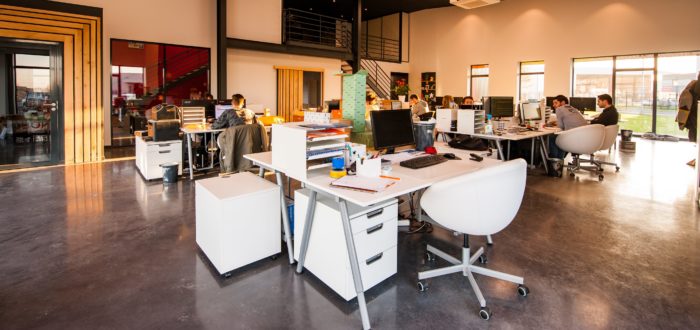Originally published in CIO
By David Levin
A decade ago, if you had to work over the weekend, you’d go to the office for the best high-speed internet, access to scanners, color printers—even to use your work computer. Those days are gone.
Why? Because your office hasn’t kept pace with consumer technology. Today, your employees likely have a better home office than what you offer. Plus, there’s probably a nearby coffee shop serving single-origin pour-overs. And I bet that coffee shop is nicer than your office—with better coffee, too.
Before the age of the iPhone and everyone having access beautiful, mobile technology, the office was the most productive place to work. That began to shift in 2008 when Apple launched its App Store, ushering in an age where consumer expectations about technology were raised.
First, mobile devices gave us an experience that exceeded our personal computers and laptops. Then we became used to having a similarly beautiful experience on our televisions, from Netflix, Hulu, Amazon Fire and Apple TV. And now, IoT devices are making everything from our fridges to our toothbrushes more interactive, intuitive and easy to use.
Think about it this way: before leaving to come to your office, any one of your employees could ask their smart home speaker to water the grass, turn off the lights and lock the door. Or they could check their phone to see how they slept, track the elevation gain on their run or order an Uber.
And then they leave that connected environment—where everything is tailored to their preferences—and come to your office, a place that’s likely stuck in the 1990s. That old office concept doesn’t cut it anymore. And not just due to a lack of technology, but a lack of thought about the employee experience.
Our personal lives are filled with apps and devices that’ve been designed based on UX principles to make things easier—to make everyday tasks more enjoyable. I mean, think about the last time you downloaded an app with a bad user experience. What’d you do? Did you keep using it? No. You deleted it. Because there was likely another app out there that could accomplish the same thing but had a better user experience.
Guess what, that same thought-process extends beyond your employees’ personal lives. While they can’t just delete your company from their phones, your employees can find a better user experience elsewhere. So, if you want to create an environment that people actually want to come to, put some thought into your employees’ user experience.
Here are five approaches to improve that user experience:
1. Fix one thing
Pick one thing and fix it. For example, booking meeting rooms is a major productivity pain point at many offices. Fixing that begins with learning what is not working correctly and then designing the optimal consumer journey. As with all good UX design, your solution will evolve over time, improving with extensive user testing. And after fixing one problem, apply the same process to other pain points, whether that’s booking desk space for visiting staff, improving your benefits enrollment process or promoting your wellness programs.
2. Listen
Beyond improving employee productivity tools, don’t assume that a keg on Friday or a foosball table in the breakroom will make people happy. Instead, ask them what irks them and, if possible, make improvements. Every office has something that frustrates its employees, and that thing may not be readily apparent. So ask. Find out what could be optimized, then dive in. For most employees, it’s the little things that make a difference.
3. Treat employees like customers
If your company put as much effort into the employee experience as it does the customer experience, would anything change? Probably. Take banking for example: to improve the customer experience, banks put so much time, thought and effort into creating apps that make mobile banking easy—and that effort paid off. Banking is still the same, but the customer experience is vastly different than it used to be, with higher customer satisfaction scores and increased usage of mobile banking apps. Now, if you extended even a fraction of that amount of effort to improve the employee experience, imagine the impact on your workforce.
4. Set zones
Great modern workplaces need spaces for collaboration and spaces for individuals to work without distractions. Those spaces must work seamlessly as employees shift from one area to another. Everything from docking stations to wireless connections for laptops should work as easily as getting online at Starbucks. A clunky experience makes employees want to work anywhere but the office.
5. Use data
Modern offices use visual display screens as a tool to boost employee engagement. Those screens should push data to the employees, so they don’t have to seek out the information they need. That could be information about a significant client having a major service outage, sales data or a problem on a manufacturing production line. Today’s workforce wants to be empowered with information, so they can act proactively and avoid the confusion and frustration caused by information siloes.
Finally, having made these improvements, office managers should seek regular feedback from simple employee surveys. That information, in turn, should be used to iterate and make constant, small improvements that will ensure that your office is a truly productive and engaging place to work.
Today, it’s not just pay and benefits that matter when it comes to hiring and keeping talented employees. The work environment needs to be better than what they can get at home.
David Levin is president and chief executive officer of Four Winds Interactive in Denver. The visual communications company sells software to create and manage content on digital signs and kiosks in office buildings, airports, casinos, hospitals and stadiums to improve efficiency, employee engagement and customer satisfaction.

